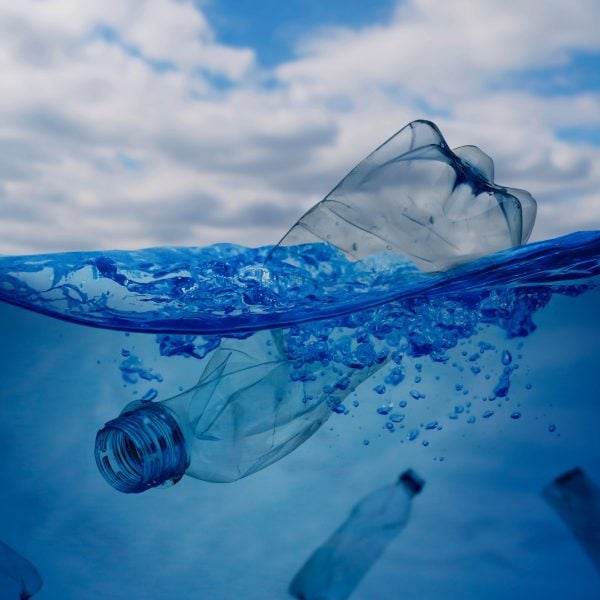A sponge made from a fusion of cotton fibre and squid bone could help to clear some of the world’s microplastic pollution after a team of Chinese researchers found it can soak up as much as 99.8 per cent of the particles from water samples.
Researchers from the University of Wuhan and Guangxi University produced the fibrous foam by combining cellulose fibres from cotton and the tough biopolymer chitin, which forms a squid’s skeleton.
When deployed in water, the sponge was found to remove between 98 and 99.8 per cent of microplastics, and the researchers believe the material’s low cost and simple production could allow it to be scaled up for widespread use.
“Few practical technologies” for removal of microplastics
Cellulose and chitin are two very abundant molecules in nature and are already often used to help cleanse pollutants from wastewater.
The researchers’ innovation involved combining the two in a way that offers unprecedented efficacy at cleaning up microplastics – the tiny plastic particles that have pervaded the environment, posing a significant risk to ecosystems and human health.
“The planet is under great threat from microplastics,” the researchers wrote in their paper in the journal Science Advances. “And aquatic ecosystems are the first to suffer as they provide convenient places for microplastics, which can combine with other contaminants and be ingested by multiple levels of organisms.”
“Currently, there are few practical technologies for efficient and extensive removal of microplastics, especially for those smaller than 10 [micrometres].”
Although the cellulose and chitin are fused on a molecular level to make the “Ct-Cel biomass foam”, the production process was completed using readily available equipment.
The researchers say that this – combined with the low cost of the abundant materials and their non-toxic, biocompatible nature – means that the foam could avoid the problems that have hampered other solutions from gaining traction outside of the lab.
“These works generally involved complex fabrication procedures or expensive raw materials, and the investment might be unaffordable for large-scale remediation of microplastics,” they wrote.
Biomass sponge is made simply and cheaply
To make the biomass sponge, the researchers bonded the cellulose and chitin on a molecular level, forming a cross-linked fibrous network.
This involved first soaking chitin flakes in a solution of one per cent acetic acid and then blending the material with a high-speed homogeniser – a common tool in industrial food, pharmaceutical and cosmetics production.
The cotton, meanwhile, was stirred by a soy milk machine to obtain a cellulose solution before the two compounds were mixed together, poured into a mould and frozen.
The researchers tested their sponge in the lab and in four real-world settings – an agricultural irrigation site, lake water, still water and coastal water.
Not only did the sponge remove 98 to 99.8 per cent of microplastics during its initial use in these settings, but it was also found to remain effective when reused, removing around 95 per cent of microplastics after five uses.
The researchers observed that the sponge worked through several mechanisms, including physically intercepting microplastics, attracting them electrostatically and occasioning interactions between the chitin, cellulose and plastic molecules.
The researchers believe that, following further testing, the sponge could be used not just in seas and rivers but also to treat factory wastewater and as a filter in domestic washing machines and dishwashers, stopping microplastics from entering the natural world in the first place.
Researchers have found microplastics in the human brain, blood and digestive system, where they have been shown to damage cells and affect hormone activity. They also have consequences for other species and ecosystems.
Another recent innovation targeting microplastics is a device by the Tyre Collective that can catch tyre wear from cars – one of the world’s largest sources of microplastic pollution.
The top photo by New Africa via Shutterstock.

